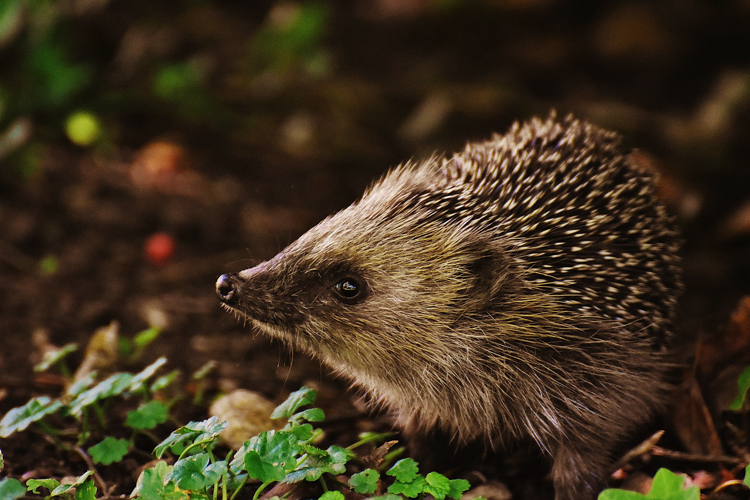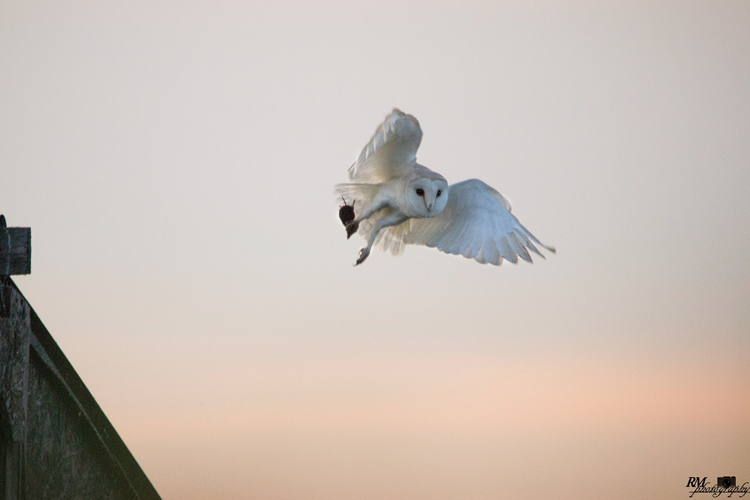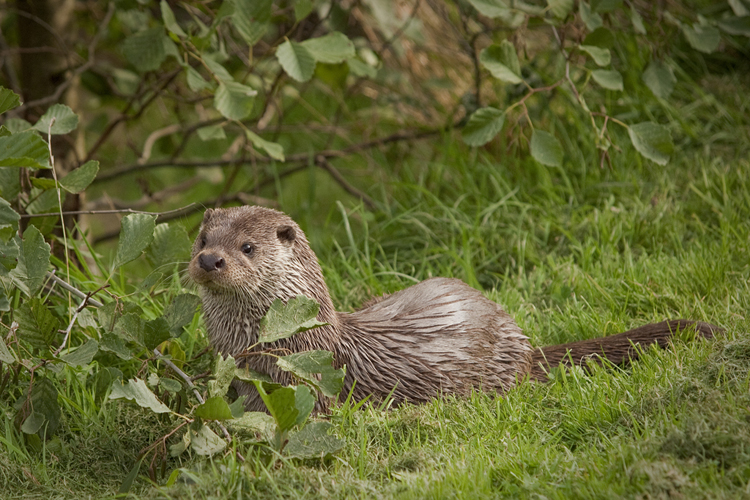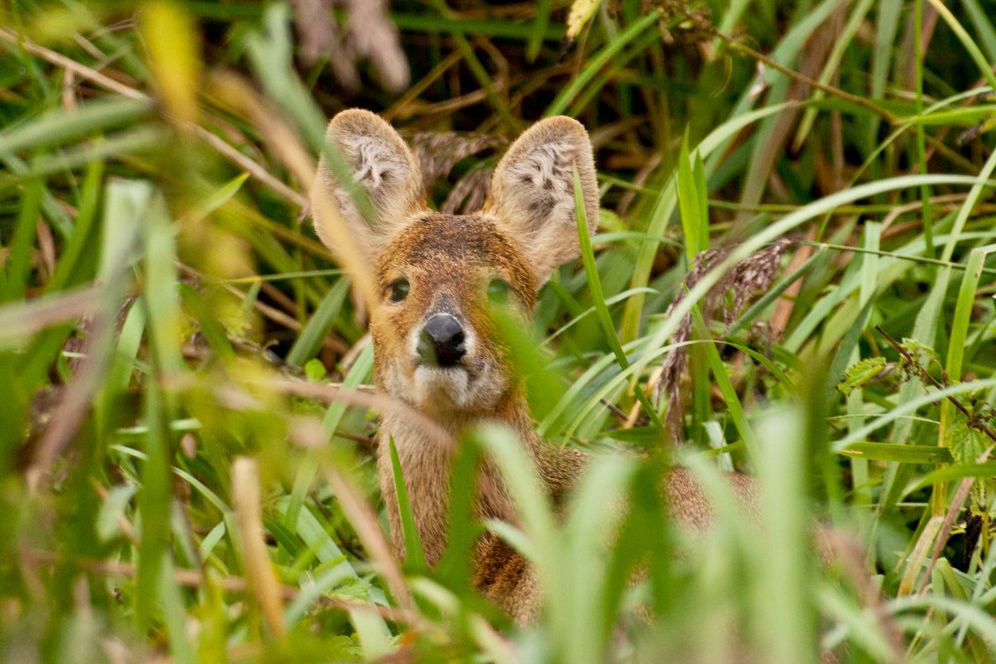

The nights are drawing in and many of our summer species have seemingly disappeared, but don't let that put you off heading out on a wildlife spotting trip.
There's still plenty of fascinating species to look out for once the sun has gone down. So grab your binoculars, a torch and a warm flask and read on to find out some of our top nocturnal wildlife to find in the Broads.

Loved by children and adults alike, hedgehogs are a truly unique species here in the UK. They are the only spiny mammal we have with between 5,000 and 6,000 spines covering their skin which they use to protect themselves against predators such as foxes and cats. They might have very poor eyesight but their long nose provides an excellent sense of smell which they use to hunt for their insect prey - they actually get their name from their distinctive foraging habit of snuffling through hedge bottoms!
Where to find: Hedgehogs have been in severe decline with over half of the population being lost since the turn of the millennium, so they are unfortunately not as common a sight as before. They can often be found in gardens, sometimes 'facing-off' against one another for food that has been put out for them (such as mealworms or tinned pet food). You also might see them out and about along hedgerows and the edges of fields in the Broads, so make sure you watch out for them when driving!
These tiny bats might weigh no more than 10 grams but that doesn't stop them being expert hunters. Around the Broads at night they can often be found ‘aerial hawking’ hunting just above above ground level as they frantically search for insect prey. They emerge around ten minutes past sunset and their silhouette can be seen fleetingly as they cross the half-dark sky.
Where to find: By the river’s edge is an ideal place to catch a glimpse as reed beds are a natural habitat for a range of insects that they feed on. Lightly wooded areas are also likely to host bats (particularly areas of dead wood) so somewhere where trees are protected (such as How Hill) would be a good place to go for a sighting. Unfortunately, the pipistrelle bat has declined dramatically in recent years due to modern farming practises, but there are an array of bat boxes dotted about the national park to give them the best chance possible.

The barn owl is one of our country's most-loved birds for good reason - their white and brown plumage, spooky screeching and swift swooping make them an unmistakable nocturnal sight in the British countryside. However, they have unfortunately become much more uncommon in recent years as a result of traditional nesting sites being destroyed.
Where to find: Throughout the Broads you'll often find agricultural land running alongside the river's edge and this can be a great place to look for barn owls. Try to pick a dry night as the feathers of a barn owl aren’t water proof and so they avoid damp conditions. Listen out for them, as they have a distinctive ‘scream’ or ‘hiss’ when they’re hunting.
If they aren’t calling out they are entirely silent so you need a keen eye for a small white ghost as it drifts noiselessly above the fields.
Barn owls are regularly seen at NWT Hickling Broad and RSPB Strumpshaw Fen.
A great indicator that the Broads are well looked after is the presence of toads, who thrive on clean, fresh water. Fortunately, our national park has plenty of wetlands providing these amphibians with the perfect natural habitat. Toads are mainly nocturnal, which means to really appreciate them in all their glory you need to be on the look out at night. They bunker down in mud and other detritus in order to get through the winter, so head out before it gets too cold and you might catch a glimpse.
Where to find: Take a look on paths and grassy areas close to water-bodies such as broads, lakes and ponds. You can also often find them in damp areas of woodland and shrub. In spring you might even see them crossing roads en-masse as they return to their breeding grounds, so look out for our warty friends and be extra vigilant!

This fascinating, well-known predator is at the top of the spotting bucket list of most wildlife enthusiasts who visit the Broads, however they can be notoriously difficult to see as they are rather rare and also semi-nocturnal. They can be found throughout the Broads as they favour clean water that is well-stocked with prey such as water fowl and fish.
Where to find: If you want to spot one during a night-time wildlife watching session then you’re most likely to see one at the beginning or end of the night as prime watching times are dawn and dusk. They like shallow water so keep an eye out along the quieter reed beds and river fringes of the Broads. They are generally easily spooked, so for a good chance of spotting one of these shy creatures you might need to stay still and quiet in the same place for well over an hour. They're well distributed throughout the national park and have even been spotted swimming along the River Wensum in Norwich!
You’re not likely to see or hear a Tawny owl during daylight but autumn at dusk is by far the best season to spot them in and they favour woodland habitat. The tawny owl is a mottled reddish-brown, with a paler underside and feathers which appear to be vertically striped.
Where to find:
The best times to spot them are at dusk, perched on a tree branch, close to the trunk while they scan the nearby area for food. Listen out for the male's call – "hoooo-ho-hoooo" and the female’s screechy, "kuvitt-kuvitt". They have been recently spotted on walks around the How Hill Trust and responding when you mimic their calls.
Learn the difference between owl calls and download them at the British Trust for Ornithology.

The numbers of Chinese water deer are in decline in their native East Asia. They were introduced to the UK in the 1800's and you are likely to spot one in the National Park, as they favour the wet and marshy habitats found here. Male deer are known for their long elongated front teeth, which resemble tusks and have earnt them the nickname of ‘vampire deer’.
Where to see:
You can usually see them at dusk, when they move from the tall, wet fen vegetation for cover to more open areas of wet pasture to graze at night. At dusk, try following a footpath in the National Park which is close to reed beds. They have recently been spotted around How Hill, at Wheatfen, Ludham, with regular sightings at Norfolk Wildlife Trust, Hickling Broad.
Spending an evening (or early morning) wildlife watching can be a magical experience that allows you to spot creatures that you would never normally get the chance to see. Make sure that you’re quiet, still and wrapped up warm, so that you can truly immerse yourself in the dark side of the Broads!